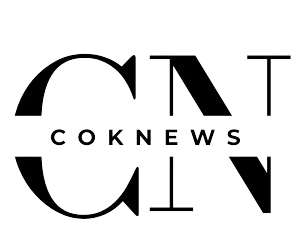Vietnam’s economy is shaped by its position as a major exporter in Southeast Asia, with industries like manufacturing, agriculture, and technology driving growth. The Vietnamese đồng (VND) often reacts to global market trends, trade policies, and changes in foreign investment. For traders, this creates opportunities to profit from currency fluctuations while requiring careful analysis of both local and international factors.
By understanding the economic drivers in Vietnam, traders can develop strategies that align with the market’s unique characteristics.
Effective Forex Trading Strategies for Vietnam
1. Trend Trading
One of the simplest and most effective strategies for currency trading in Vietnam is trend trading. This involves identifying the direction of the market—whether upward, downward, or sideways—and placing trades accordingly. For example:
- In an export-driven economy like Vietnam’s, positive trade data can boost the value of the VND, creating upward trends against major currencies.
- Conversely, global economic downturns or trade restrictions can lead to downward trends, offering opportunities for short positions.
To implement this strategy, use technical indicators like Moving Averages or Relative Strength Index (RSI) to confirm trends and avoid false signals.
2. News-Based Trading
Vietnam’s economy is heavily influenced by global trade agreements, monetary policies, and investment flows. Traders can capitalize on these events through news-based trading. For example, announcements about changes in U.S.-Vietnam trade relations or shifts in regional agreements like RCEP (Regional Comprehensive Economic Partnership) can significantly impact the forex market.
Stay updated on economic calendars and news sources to identify trading opportunities based on significant events. However, be cautious of volatility following major announcements, as rapid price changes can lead to unexpected losses.
3. Range Trading
In periods of economic stability, the Vietnamese đồng may trade within a predictable range against other currencies. Range trading involves identifying key support and resistance levels and buying at the lower boundary while selling at the upper boundary.
For Vietnam-based traders, this strategy works well when the market lacks strong directional movement. Combining technical analysis tools like Bollinger Bands or Fibonacci retracements with a good understanding of the local economy can enhance the effectiveness of this approach.
4. Carry Trade Strategy
Carry trading involves borrowing funds in a low-interest-rate currency to invest in a higher-yielding one. While not specific to Vietnam, this strategy can be adapted to include the VND if interest rate differences between Vietnam and other countries are favorable.
For example, if Vietnam’s central bank raises interest rates to combat inflation, the đồng may attract carry traders seeking higher returns. However, this strategy requires a thorough understanding of interest rate policies and potential risks from exchange rate fluctuations.
Key Considerations for Traders in Vietnam
1. Understand Local Market Drivers
Vietnam’s currency movements are often linked to exports, foreign investment, and trade balances. Monitoring data like GDP growth, inflation rates, and manufacturing output can help traders anticipate market trends.
2. Leverage Technology
Trading platforms like MetaTrader 5 provide tools for analyzing markets, setting stop-loss orders, and automating strategies. Vietnamese traders can use these platforms to stay competitive in the fast-paced forex market.
3. Risk Management
Like all financial markets, forex trading involves risks. Use position sizing, stop-loss orders, and risk-reward ratios to protect your capital. Avoid over-leveraging, as this can amplify losses, particularly in volatile markets.
Final Thoughts
Vietnam’s unique economic climate provides both challenges and opportunities for forex trading. By using strategies like trend trading, news-based trading, and range trading, traders can adapt to the market’s conditions and maximize their potential. Combining local knowledge with global insights is key to success in Vietnam’s currency market. With the right approach, traders can navigate the complexities of forex trading and achieve their financial goals.




